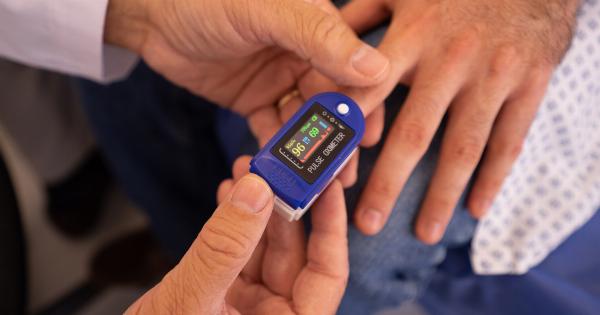High blood pressure, also known as hypertension, is a significant health concern affecting millions of people worldwide. It is a condition that often goes unnoticed, leading to serious complications such as heart disease, stroke, and kidney failure.
To address this global health issue, new blood pressure guidelines have been introduced to help individuals and healthcare providers better manage and prevent hypertension. This article will delve into the details of these guidelines, their implications, and the importance of raising the bar when it comes to blood pressure management.
Understanding Hypertension
Hypertension is a condition characterized by high blood pressure, which means the force of blood against the walls of arteries is consistently too high.
It is often referred to as the “silent killer” as it rarely presents noticeable symptoms until it reaches advanced stages. The previous blood pressure guidelines defined hypertension as a reading of 140/90 mm Hg or higher. However, recent research and data analysis have prompted a revision of these guidelines in an effort to improve early detection and intervention.
The New Blood Pressure Guidelines
Under the new blood pressure guidelines, the threshold for hypertension has been revised to 130/80 mm Hg or higher. This lower threshold aims to identify individuals who may be at risk at an earlier stage and take necessary preventive measures.
Healthcare providers are advised to monitor blood pressure more closely and actively engage patients in adopting lifestyle modifications to manage their blood pressure levels.
Implications for Individuals
The revised blood pressure guidelines have important implications for individuals. More people may be diagnosed with hypertension under the new criteria, which means a larger population will require blood pressure management and follow-up care.
Early detection of high blood pressure allows individuals to take action sooner, reducing the risk of complications and improving overall health outcomes. It is crucial for individuals to be aware of their blood pressure and work closely with their healthcare providers to adopt recommended lifestyle changes or receive appropriate medical treatments.
Implications for Healthcare Providers
With the new blood pressure guidelines, healthcare providers play a critical role in educating and guiding patients towards better blood pressure management.
Regular monitoring, lifestyle modifications, and appropriate medication prescriptions are key components of effective management. Providers need to be proactive in discussing blood pressure with their patients, providing necessary support in making lifestyle changes, and ensuring regular follow-ups.
The guidelines emphasize personalized care and individualized treatment plans based on the patient’s unique medical history and risk factors.
The Importance of Preventing Hypertension
Preventing hypertension through healthy lifestyle choices is crucial.
Following the new blood pressure guidelines, individuals are encouraged to make lifestyle modifications such as adopting a balanced diet, engaging in regular physical activity, reducing sodium intake, limiting alcohol consumption, avoiding tobacco use, managing stress, and maintaining a healthy weight. These changes not only help prevent hypertension but also contribute to overall well-being and reduce the risk of other chronic diseases.
Raising Awareness and Improving Education
One of the key aspects of the new blood pressure guidelines is the emphasis on raising awareness and improving education about hypertension.
It is essential for individuals to understand the significance of blood pressure management and the impact it has on overall health. Effective communication and education campaigns are crucial in enabling individuals to make informed decisions about their lifestyle, actively participate in blood pressure monitoring, and adhere to treatment plans.
The Role of Technology
Technology plays a vital role in improving blood pressure management and adherence to treatment plans.
With the advancement of health monitoring devices and mobile applications, individuals can easily track their blood pressure readings and receive reminders for medication or lifestyle modifications. These tools not only empower individuals but also enable healthcare providers to remotely monitor their patients’ progress and intervene when necessary.
Advancements in Pharmacological Treatments
In addition to lifestyle modifications, pharmacological treatments continue to play a significant role in blood pressure management.
The new guidelines emphasize the need for appropriate medication prescriptions based on an individual’s risk factors and medical history. Healthcare providers have a range of antihypertensive drugs to choose from, considering factors such as efficacy, tolerability, and potential side effects.
Regular monitoring and adjustment of medication doses are essential for optimizing outcomes and minimizing adverse events.
Collaborative Approach to Hypertension Management
Hypertension management involves a collaborative approach between individuals, healthcare providers, and healthcare systems. The new blood pressure guidelines highlight the importance of teamwork to achieve optimal outcomes.
Regular communication, active participation, and shared decision-making are crucial within this collaborative framework. By working together, individuals and healthcare providers can raise the bar when it comes to blood pressure management and improve overall health outcomes for millions across the globe.
The Road Ahead
The introduction of new blood pressure guidelines marks a significant step towards a comprehensive approach to hypertension management.
By lowering the threshold for diagnosis and focusing on prevention, these guidelines aim to minimize the burden of hypertensive complications on individuals and society as a whole.
Adhering to these guidelines, raising awareness, improving education, utilizing technology, and promoting collaboration are essential to successfully implement the new blood pressure guidelines and improve the prevention and management of hypertension.































